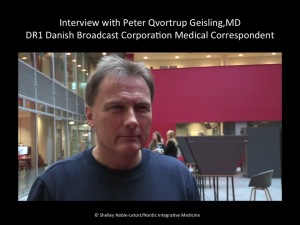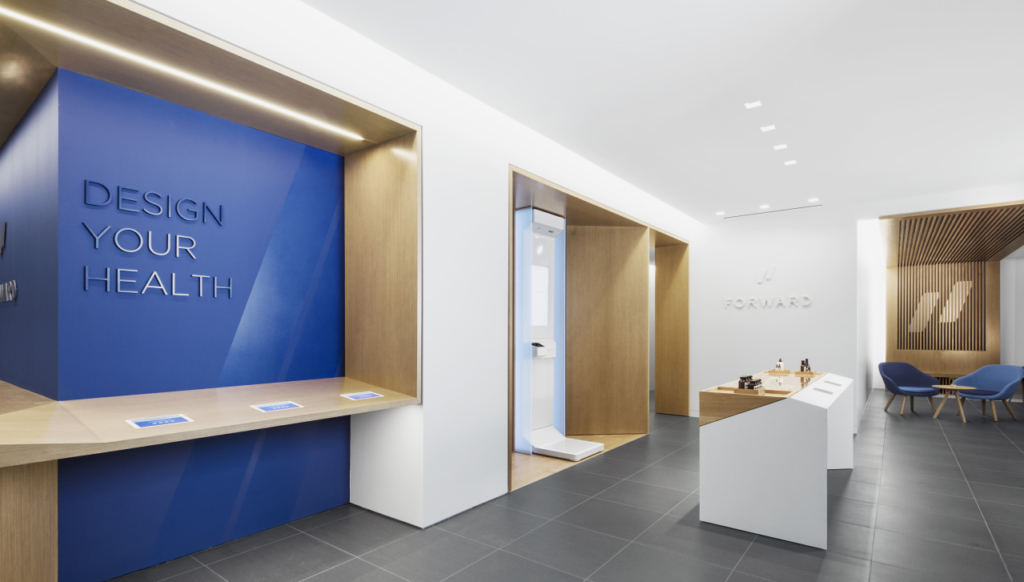NIM will provide solutions for both an enrichment of quality of care and the reduction in domestic healthcare expenditures.
Denmark is world famous for their free family doctor visits, specialist appointments, hospital care, and pharmaceutical support. The question now is: Is Denmark receiving the best quality of care and treatment and achieving the highest amount of health benefits for the money spent?
Read Mandagmorgen 2014 Report, Patienternes Nye Rejse
Danish people perceive themselves as healthy, yet statistics reveal that Danish people, in reality, are not amongst the healthiest in the world. According to Denmark’s Sundhedsstyrelsen’s 2010 report, Det danske sundhedsvæsen i internationalt perspective, in comparison to the EU-15 and OECD, Danish health expenditures are relatively higher than the average, indicators for quality and continuity of care of chronic conditions are lowest, life expectancy is lowest, mortality rate for cancer is highest, and there is a deficit of “family doctors” in Denmark. NCIM will fulfill and/or find solutions to these deficits.
There are no competitors at this time. There are Sundhedhuse being established in Denmark but they do not treat patients with the principles of Integrative Medicine and do not provide the depth and breadth of integrative healthcare that NIM will provide.
The 2013 “laegerkonflikt” opened up a healthy and timely discussion on the current practices of medicine and patient care in Denmark; not only about what is working and what is not but most importantly it gives the Danish society the opportunity to explore constructive solutions to solve Denmark’s deeper needs in relation to healthcare expenditures, quality of care, life expectancy and mortality rate.
Generally speaking, the Danish health care system, like many in the world, is a disease-centric biomedical model where a patient receives limited time with his doctor and leaves with a written prescription or is admitted to a hospital for further treatment that is costly to both the patient and the health care system. This one-dimensional form of treatment for the most part is limited to conventional medicine and results in more visits to the doctor as well as repeated hospitalizations.
In the US, Australasia and a few countries in Europe a whole new way of treating patients has emerged. It is a paradigm shift in the way that primary healthcare physicians or “family doctors,” as they are called in Denmark, deliver healthcare to patients. For over 10 years, a more therapeutic treatment form called Integrative Medicine (IM), a patient-centric biopsychosocialspiritual recovery model, has been offering patients a self-empowered, collaborative partnership with their doctor and personalized healthcare team. This multi-dimensional form of treatment places the patient’s needs, desires, beliefs, values and goals at the center of their health plan; allows more time for empathetic consultations that discuss the patient’s illness, health, culture, life, legacy and loved ones; and integrates a wider range of scientific evidence based treatments that are complementary to conventional medicine.
NIM addresses these needs and focuses on the best quality of treatment and the best use of fiscal resources for optimal patient-empowered healthcare.
SUNDHEDSVÆSENET – IFØLGE DANSKERNE, 2016
TrygFonden and Monday morning has completed the previously broadest and most in-depth survey of how the Danes view the overall health care system. More than 6,000 Danes participated and the study shows a skepticism towards the system’s ability to deliver its core services: the right diagnoses and treatments.
- Only a third rely so much on the relationship between health service sectors that they feel safe to be sent to the right place at first.
- Only 35 per cent., or about one in three, relatives of patients in a long-term course of treatment believe that you will always get the right treatment in the face of health care.
- Many want to play a more active role, both when they themselves and their relatives are in contact with the health system.
- The Danes also emphasizes a good dialogue with the health professionals. Two-thirds – 67 percent of Danes believe that health care professionals should be more open to talk to patients about alternative therapies. “Many are ready to go a step further and integrate alternative treatment further in the conventional health care system. Thus, 61 percent Danes predominantly or completely agree that doctors should be able to refer patients to alternative treatment equally with treatment of the traditional health care system. And 60 percent believes that it should be possible to get reimbursement from health insurance for alternative treatment. “
“Politicians are facing an important choice of far-reaching significance for the majority of Danes. What health care do we want? The ambition of a world class health system is repeated again and again. The only problem is that we are very far from world class – at least according to the Danes “, says Erik Rasmussen, Director of Monday morning.
PATIENTERNES NYE REJSE, 2014
This report from Monday Morning is investigating why the policy objective of a patient-centered and better coordinated health care system is far from being a reality in the individual Danish hospitals and departments. It is the perspectives and opinions from a broad range of professionals in the field of health care that this report is based on.
Known procedures and routines are challenged by an ambition to organize health care so that it is based on patients’ and relatives’ needs, knowledge, skills, attitudes and desires.
It’s not just about showing patients more respect or empathy. Much also points to a closer and more equitable collaboration between health professionals, patients and relatives can result in an improved perceived quality for patients, better health outcomes and a more sustainable health care system with greater job satisfaction.
Hospital rounds can be traced back to Struense or earlier – a time when the doctor was the dominant authority whose evidence could not be discussed or challenged.
To give the patient a strong and independent authority requires that the sector undergoes old habits, institutions and practices a critical review.
But there is also need for greater investment, including investment in research, which complements the clinical perspective with a greater understanding of patients and their needs.
A true paradigm shift and a new culture requires a broad effort, ranging from the political level to the leaders of the individual departments – all expressed through concrete objectives and incentives, demonstrating that the “patient-centered” is not merely an intention but a high priority action.
“We have to go from being an oppressive system to a supporting system” Ida Gøtke (p. 45)
“It’s basically about rethinking the traditional medical role and dared open space between doctor and patient – even if it is difficult.” Claus Munk Jensen (p. 46)
A very important part of culture change requires coordinated action by the politicians and officials who make strategic decisions in the state, regions and municipalities. They must adopt a much more holistic view of the entire health care infrastructures, exploiting every opportunity to create frameworks and structures that puts patients at the center and ensure that efforts are coordinated across many healthcare actors and bodies.
Not least, they have a responsibility to ensure that the bottom-up development is backed up with a clear signal from above: The transition to a health care system that puts patients at the center, must succeed.
“Until now, the economic incentives have been good to promote high productivity, but they are not as good at promoting that patients receive the best possible health for money. Therefore, we are happy to participate in the project “Project New Management in a Patient Perspective” and contribute to the development of a new management target “, Eva Sejersdal Knudsen (p. 53).
According to Mogens Hørder, professor at the Centre for Applied Health System research at the University of Southern Denmark, SDU, it is “a serious shortage” that the desire to put the patient at the center has not really spread to the universities.
“There is need to develop a Danish improvement framework for creating development. We must have a scientific method to develop the whole health care system and not just developing treatments for specific diseases”, says Jens Winther Jensen.
FORLØBSPROGRAMMER FOR KRONISK SYGDOM – DEN GENERISKE MODEL, 2012
The aim of the Forløbsprogrammer is through a professional and organizational framework for the multi-sectoral, complex and lengthy processes to ensure:
- high quality of the overall effort
- patient involvement
- coherent treatment and
- appropriate use of resources (p7).
Healthcare and society in general face an important task to offer systematic and proactive measures that prevent illness in general, and among those who are at particular risk. The task is also to identify, treat, rehabilitate and prevent deterioration of the people who get sick and not least to help support the patient’s active role in the best possible way to take care of their own situation.
- Clinical guidelines: Forløbsprogrammer integrates evidence-based clinical guidelines that support different types of medical intervention in specific courses of patient treatment (p. 15).
- Multi Disease: In some cases, it would be useful to organize some diagnostic -and treatment interventions such as integrated (eg shared care) between various actors (p. 35).
- Development Coordination: Coordination between health professionals can be integrated in the performance of the individual efforts. In some cases there are written procedures for coordination, and in others it is rather an implicit practice (p. 59).







Recent Comments